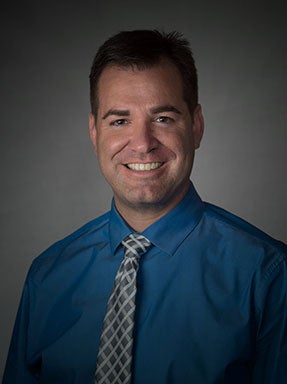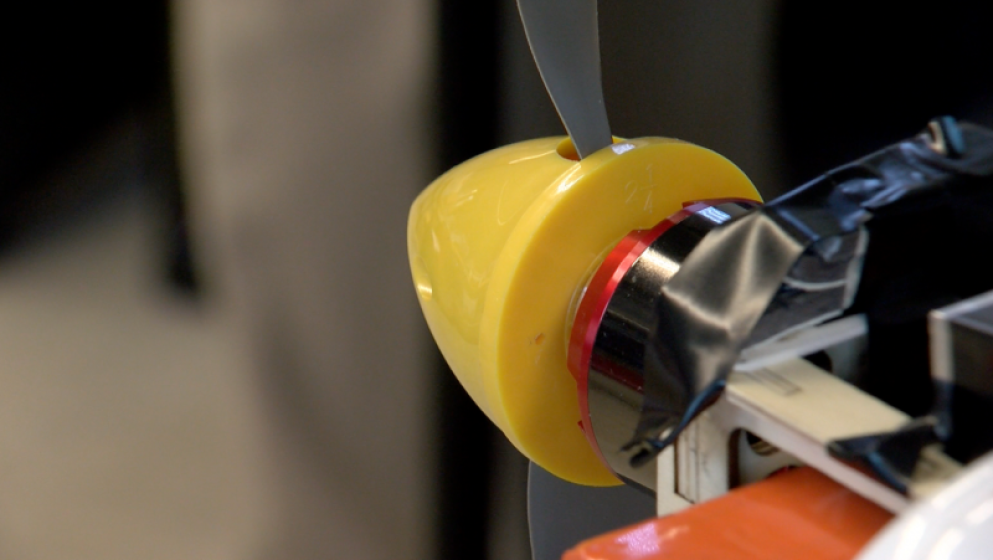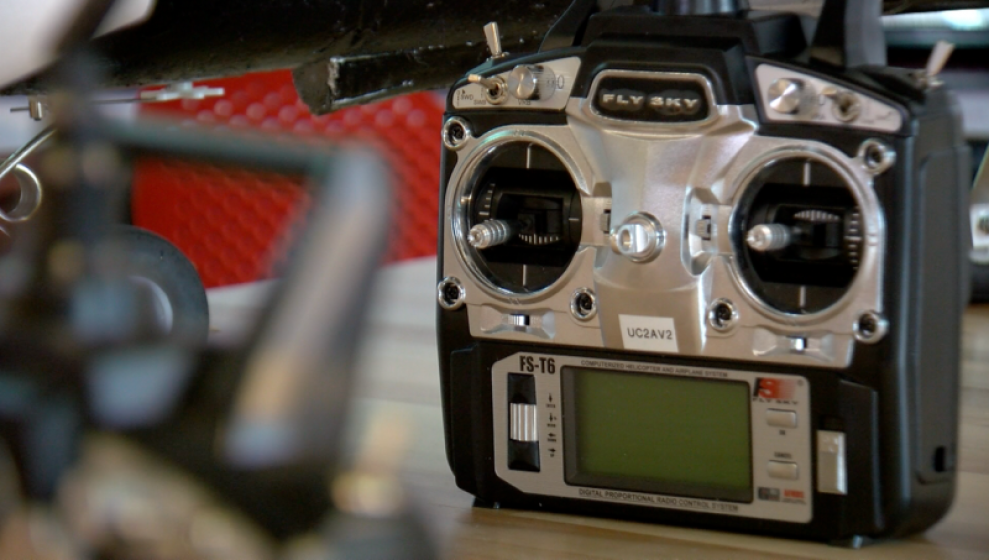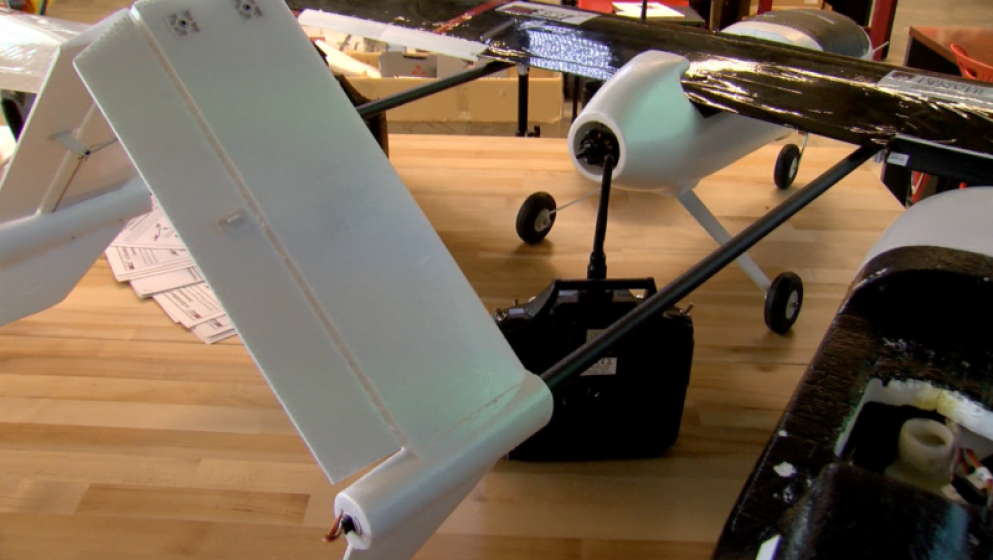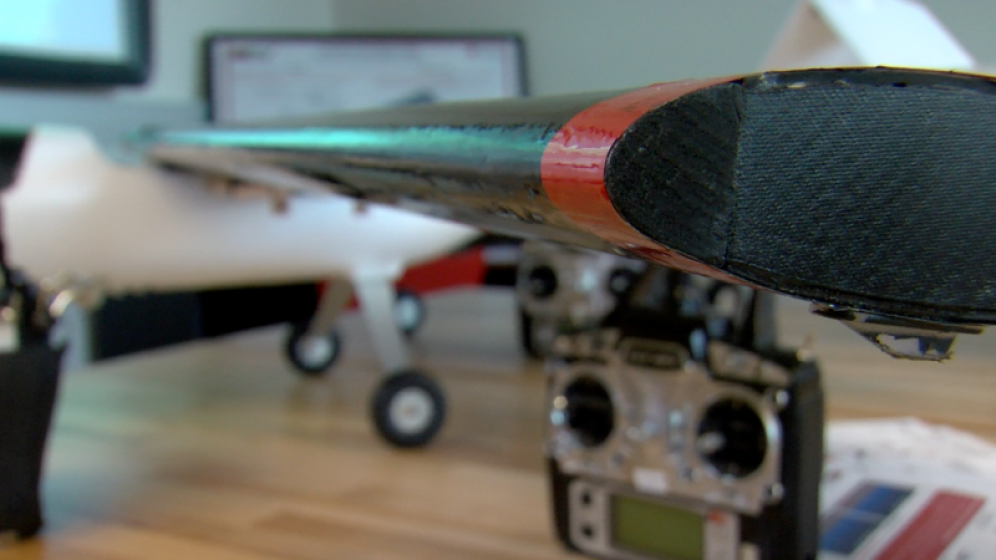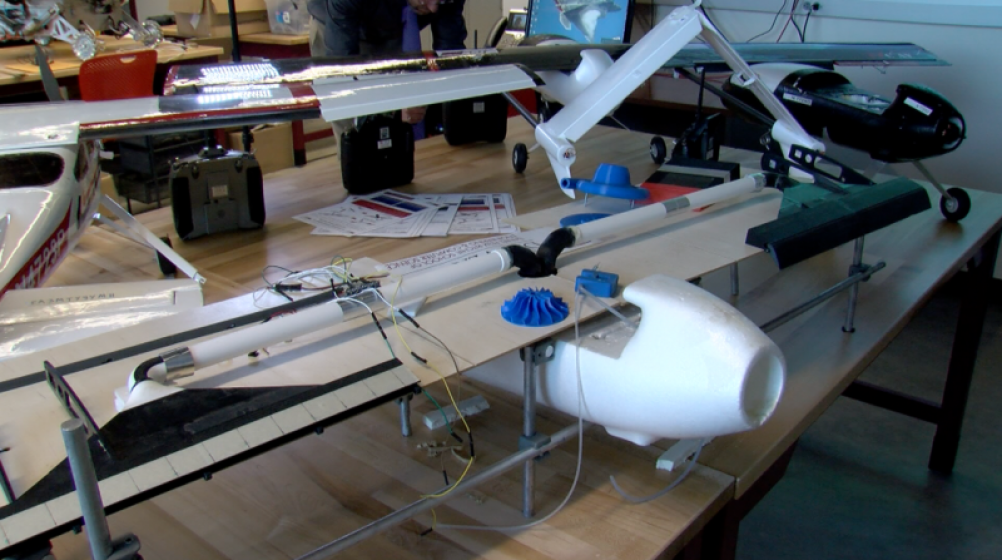The Future Takes Flight at DU
Research institute creating new technology for UAVs
Imagine walking on the University of Denver campus and seeing an unmanned aerial vehicle (UAV) carrying multiple packages for delivery. Or perhaps strolling through downtown Denver and seeing that same UAV as part of a Hollywood movie shoot. Research under way at DU’s Unmanned Systems Research Institute (DU2SRI) aims to make what once might have seemed like a dream become a reality.
Led by research scientist Kostas Kanistras, the institute in the Daniel Felix Ritchie School of Engineering and Computer Science is attempting to improve UAV technology by allowing for shorter takeoffs, all while increasing payload and overall flight times. With help from undergraduate and graduate students, Kanistras has enhanced the lift of the aircraft using a technique called “circulation control.” The air intake in the belly of the aircraft circulates the wind to the trailing edge of wings, which improves the aerodynamics and overall performance.
“Enhancing the lift capability of an aircraft allows you to take off from the ground faster; you can carry more payload and actually change the aerodynamic efficiency of an aircraft,” Kanistras explains. “This allows you to burn less fuel or use less battery, so you can have cheaper and greener flights.”
Kanistras started his research from scratch five years ago when he came to DU as a PhD student. Professor Kimon Valavanis, director of research and innovation in the Department of Electrical and Computer Engineering, and Matt Rutherford, associate professor in the Department of Computer Science, served as Kanistras’ advisors. They encouraged him to introduce his idea, design the wings, conduct simulations, build and test the wings in a wind tunnel, build a full-scale model of the wings and finally test fly it.
“I got all the freedom that I wanted to work on this project,” Kanistras says. “I got full support from my advisors — and this has been the secret to success. I did exactly what I loved and what I liked, and this is where it brought me.”








